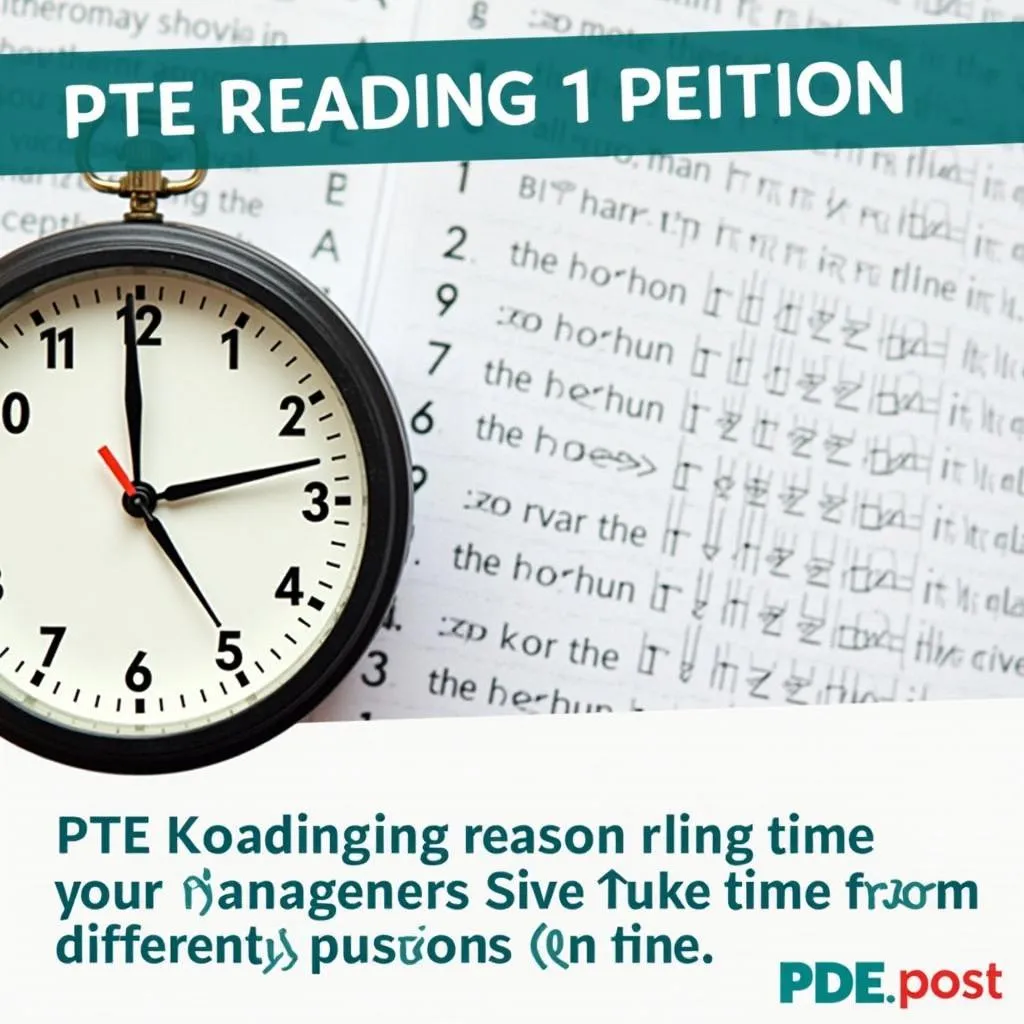The PTE Reading section can be challenging for many test-takers. Understanding common mistakes and learning how to avoid them is crucial for success. This comprehensive guide will help you identify and overcome frequent errors, boosting your confidence and improving your score in the PTE Reading section.
Understanding the PTE Reading Section
Before diving into common errors, it’s essential to have a clear understanding of the PTE Reading section structure and requirements. This knowledge forms the foundation for avoiding mistakes and maximizing your performance.
PTE preparation course syllabus overview
Key Components of PTE Reading
The PTE Reading section consists of various question types, each designed to assess different aspects of your reading comprehension skills:
- Multiple Choice (Single Answer)
- Multiple Choice (Multiple Answers)
- Re-order Paragraphs
- Reading & Writing: Fill in the Blanks
- Reading: Fill in the Blanks
Understanding these question types is crucial for developing effective strategies and avoiding common pitfalls.
Common Error #1: Poor Time Management
One of the most frequent mistakes in the PTE Reading section is inefficient time management. Many test-takers spend too much time on difficult questions, leaving insufficient time for the remaining tasks.
Tips to Avoid Time Management Errors:
- Practice with timed mock tests to improve your pacing
- Allocate specific time limits for each question type
- Move on from difficult questions and return to them later if time permits
- Use skimming and scanning techniques to quickly identify key information
 Effective time management in PTE Reading
Effective time management in PTE Reading
Common Error #2: Misreading Instructions
Another frequent mistake is not carefully reading or misinterpreting task instructions. This can lead to answering questions incorrectly, even if you understand the content.
How to Avoid Instruction-Related Errors:
- Read instructions thoroughly before starting each task
- Underline or highlight key words in the instructions
- Double-check the number of answers required for multiple-choice questions
- Pay attention to specific requirements, such as word limits or answer formats
Dr. Emily Thompson, a renowned PTE expert, emphasizes, “Many students underestimate the importance of carefully reading instructions. Taking an extra 10 seconds to understand the task can save you from losing valuable points.”
Common Error #3: Vocabulary Misinterpretation
Misunderstanding key vocabulary can significantly impact your performance in the PTE Reading section. This is particularly problematic in Fill in the Blanks and Multiple Choice questions.
Strategies to Improve Vocabulary Comprehension:
- Regularly practice with PTE-specific vocabulary lists
- Use context clues to deduce the meaning of unfamiliar words
- Study word families and common collocations
- Practice identifying synonyms and antonyms
 Enhancing vocabulary for PTE Reading
Enhancing vocabulary for PTE Reading
Common Error #4: Overlooking Text Structure
Many test-takers struggle with Re-order Paragraphs questions due to insufficient attention to text structure and coherence.
Tips for Mastering Text Structure:
- Identify topic sentences and concluding sentences
- Look for linking words and transitional phrases
- Pay attention to chronological order or logical progression of ideas
- Practice identifying relationships between paragraphs
Professor Michael Chen, a linguistics expert, notes, “Understanding the overall structure of a text is as important as comprehending individual sentences. It’s like putting together a puzzle – each piece must fit logically with the others.”
Common Error #5: Falling for Distractors
In Multiple Choice questions, many candidates select incorrect options due to cleverly placed distractors.
How to Avoid Distractor Traps:
- Read all options carefully before making a selection
- Eliminate obviously incorrect answers
- Be wary of options that partially match the text but are not fully correct
- Look for evidence in the passage to support your chosen answer
How to pace yourself during PTE exam
Common Error #6: Neglecting Context in Fill in the Blanks
When approaching Fill in the Blanks questions, some test-takers focus solely on grammar, neglecting the overall context and meaning of the passage.
Strategies for Effective Fill in the Blanks:
- Read the entire passage before attempting to fill in gaps
- Consider both grammar and meaning when selecting answers
- Pay attention to surrounding words and phrases for contextual clues
- Practice identifying common collocations and phrasal verbs
 Mastering Fill in the Blanks in PTE Reading
Mastering Fill in the Blanks in PTE Reading
Common Error #7: Lack of Critical Analysis
Some candidates struggle with questions requiring deeper analysis or inference, often selecting surface-level answers that don’t fully address the question.
Developing Critical Reading Skills:
- Practice identifying main ideas and supporting details
- Learn to distinguish between fact and opinion
- Develop skills in making inferences based on given information
- Engage with a variety of complex texts to improve analytical abilities
Dr. Sarah Johnson, a PTE preparation expert, advises, “Critical reading is not just about understanding words, but about connecting ideas and drawing conclusions. It’s a skill that improves with consistent practice and reflection.”
Conclusion: Mastering the PTE Reading Section
Avoiding common errors in the PTE Reading section requires a combination of strategic preparation, careful attention to detail, and consistent practice. By understanding these frequent mistakes and implementing the suggested solutions, you can significantly improve your performance and achieve your desired score.
Remember, success in the PTE Reading section is not just about avoiding errors, but also about building confidence and developing effective test-taking strategies. Continue to practice regularly, review your mistakes, and focus on improving your overall English language skills.
How to prepare for PTE in a short time
FAQs About PTE Reading Section Common Errors
-
Q: How can I improve my speed in the PTE Reading section?
A: Practice timed reading exercises, develop skimming and scanning techniques, and familiarize yourself with question types to improve efficiency. -
Q: What should I do if I encounter an unfamiliar word in the passage?
A: Use context clues to deduce the meaning, or skip it temporarily and return if time allows. Don’t let one word hinder your overall comprehension. -
Q: How important is general knowledge in the PTE Reading section?
A: While general knowledge can be helpful, the PTE Reading section primarily tests your ability to understand and analyze the given text. Focus on developing strong reading comprehension skills. -
Q: Are there any specific reading strategies for non-native English speakers?
A: Regular reading of English materials, building vocabulary, and practicing with PTE-specific questions can significantly help non-native speakers improve their performance. -
Q: How can I avoid running out of time in the Reading section?
A: Allocate specific time limits for each question type, practice with timed mock tests, and learn when to move on from difficult questions.